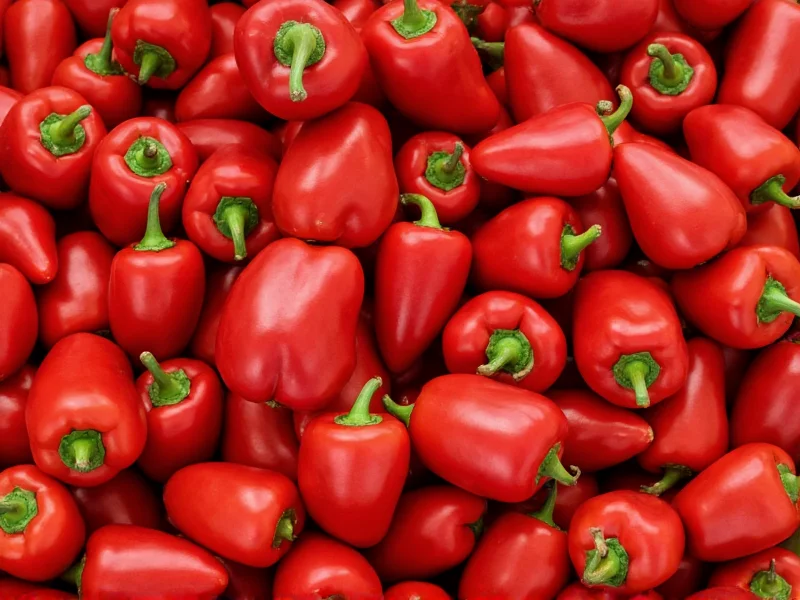Understanding what adobo peppers truly are clears up a common culinary misconception. Many shoppers mistakenly believe "adobo" refers to a pepper type, when in reality it describes the preservation method. The peppers used are almost always chipotles—jalapeños that have been smoke-dried to develop their distinctive flavor before being rehydrated and canned in the adobo sauce.
What Exactly Are Adobo Peppers?
When you purchase "adobo peppers" at the grocery store, you're getting chipotle peppers submerged in adobo sauce. The adobo sauce itself is a complex blend typically containing:
| Primary Sauce Ingredients | Flavor Contribution | Common Variations |
|---|---|---|
| Vinegar | Tangy acidity that preserves peppers | White vinegar or apple cider vinegar |
| Garlic | Pungent, aromatic depth | Fresh or powdered |
| Onion | Sweetness and complexity | White or red onion |
| Tomato | Rich base and color | Tomato paste or crushed tomatoes |
| Spices | Warmth and complexity | Oregano, cumin, cloves |
Flavor Profile and Heat Level
Adobo peppers deliver a multi-dimensional flavor experience that makes them invaluable in many kitchens. The chipotle peppers contribute a smoky depth from the smoking process, while the adobo sauce adds tangy, sweet, and spicy elements.
On the Scoville scale, chipotle peppers in adobo typically range from 2,500 to 8,000 units—comparable to a fresh jalapeño but with more complex heat. The smoking process doesn't increase spiciness but transforms the heat into something deeper and more rounded. The vinegar in the adobo sauce can make the heat feel more immediate initially, while the tomato and sugar components help balance the overall experience.
Practical Culinary Applications
Chefs and home cooks value adobo peppers for their ability to add instant complexity to dishes. Unlike fresh peppers that require preparation, adobo peppers come ready to use with their flavor already developed through the preservation process.
When incorporating adobo peppers into recipes, consider these professional techniques:
- Whole peppers work well for braising liquids or when you want distinct pepper pieces in stews
- Minced peppers distribute flavor more evenly throughout sauces and marinades
- Adobo sauce alone makes an excellent flavor base for mayonnaise, dressings, or as a meat rub
- Seeds and membranes contain most of the heat—remove them for milder flavor
For authentic Mexican dishes like mole rojo or adobada, adobo peppers provide the foundational flavor. But their versatility extends far beyond traditional applications—they enhance everything from barbecue sauces to roasted vegetable dishes and even some dessert applications where a subtle heat complements sweet elements.
Storage and Shelf Life Considerations
Proper storage significantly impacts both the safety and flavor quality of adobo peppers. When stored correctly:
- Unopened cans maintain quality for 2-3 years in a cool, dark pantry
- Once opened, transfer peppers and sauce to an airtight container
- Refrigerated, they'll stay fresh for 2-3 weeks
- For longer storage, freeze in ice cube trays then transfer to freezer bags (up to 6 months)
Always use clean utensils when handling opened adobo peppers to prevent contamination. Discard if you notice any off smells, mold, or significant color changes. The oil may separate during storage—this is normal; simply stir before using.
Substitutes When Adobo Peppers Aren't Available
While nothing perfectly replicates the complex flavor of chipotles in adobo, these alternatives work in various situations:
- Chipotle powder + tomato paste + vinegar: Mix 1 tsp chipotle powder with 1 tbsp tomato paste and 1 tsp vinegar for every pepper needed
- Smoked paprika + cayenne: Use 1 tsp smoked paprika and a pinch of cayenne per pepper (best for dry rubs)
- Canned chipotles without adobo: Simmer in a homemade sauce of tomato, vinegar, garlic, and spices
- Guajillo peppers + liquid smoke: Soak dried guajillos and add a drop of liquid smoke (milder option)
Remember that substitutes won't provide identical results—adobo peppers' magic comes from the specific combination of smoke-dried peppers and the slow-developed sauce flavors.
Nutritional Profile and Health Considerations
Adobo peppers offer more than just flavor—they contribute valuable nutrients while being extremely low in calories. A single pepper (about 15g) typically contains:
- Approximately 8 calories
- 1g dietary fiber (4% of daily value)
- Significant vitamin C and vitamin A
- Small amounts of iron and potassium
- Capsaicin, which may offer metabolic benefits
The vinegar in adobo sauce may help with nutrient absorption, particularly of plant-based iron sources. However, commercially prepared adobo peppers often contain added salt and sugar, so check labels if you're monitoring sodium or sugar intake. Rinsing peppers briefly can reduce sodium content by up to 30% without significantly affecting flavor.
Working with Adobo Peppers: Pro Tips
Maximize your experience with adobo peppers using these professional kitchen techniques:
- Pat dry before sautéing: Excess moisture prevents proper browning—pat peppers dry with paper towels before cooking
- Bloom flavors in oil: Sauté minced peppers in oil for 1-2 minutes before adding liquids to intensify flavors
- Balance acidity: If a dish becomes too tangy, add a pinch of sugar or honey to counterbalance
- Reserve the sauce: Don't discard extra sauce—freeze in small portions for future use
- Wear gloves: Capsaicin can linger on skin; use food-safe gloves when handling large quantities
When developing recipes, start with one pepper and adjust to taste—adobo peppers' intensity can vary between brands. Remember that their flavor continues to develop as dishes simmer, so it's better to under-season initially and adjust near the end of cooking.











 浙公网安备
33010002000092号
浙公网安备
33010002000092号 浙B2-20120091-4
浙B2-20120091-4